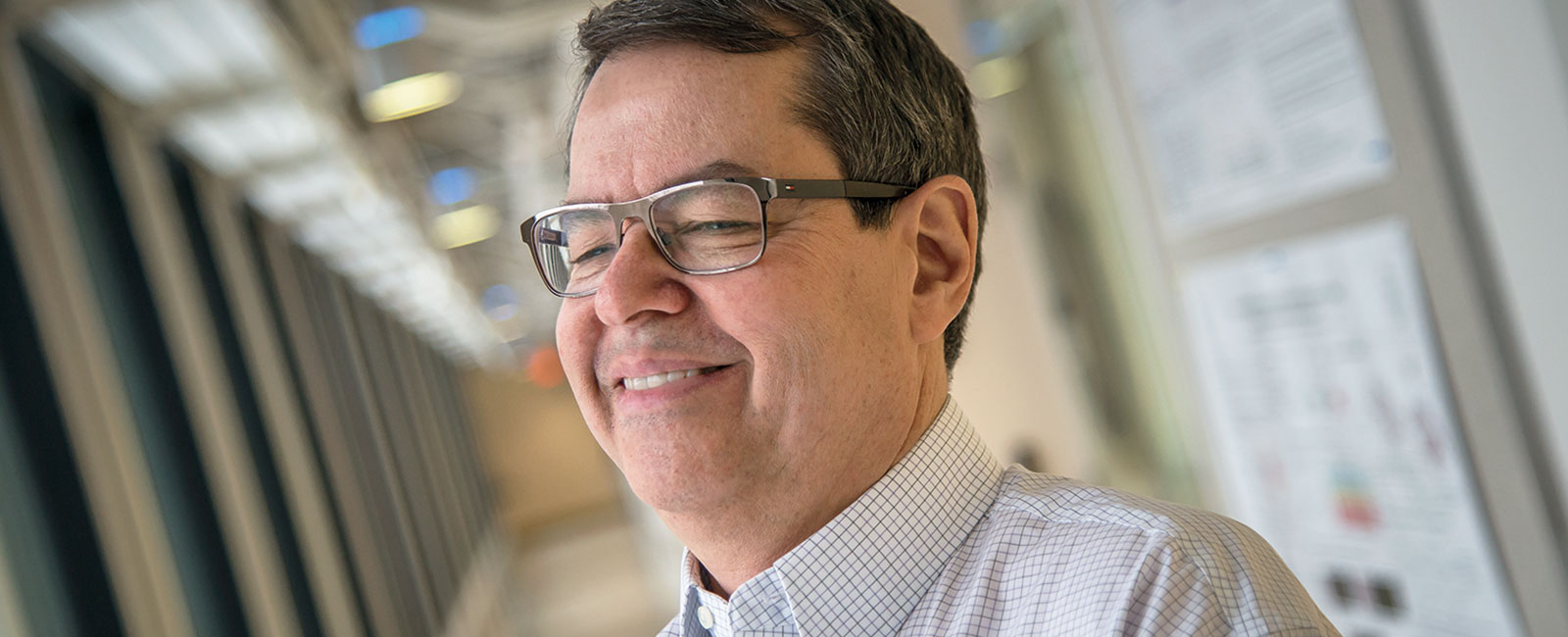
The BBVA Foundation Frontiers of Knowledge Award in Basic Sciences goes to Stephen Buchwald for creating more efficient, stable, broad-spectrum catalysts of importance in drug discovery
The BBVA Foundation Frontiers of Knowledge Award in Basic Sciences has gone in this seventh edition to U.S. chemist Stephen Buchwald “for the development of catalytic routes based on palladium and copper to construct carbon-nitrogen and carbon-carbon bonds,” an advance with “great impact” on the “efficient synthesis of modern pharmaceuticals and compounds for agricultural use,” in the words of the prize jury.
20 January, 2015
The chemistry enabled by the achievements of Stephen Buchwald, a professor at Massachusetts Institute of Technology (MIT), “is now being applied to the creation of drugs for numerous diseases including many forms of cancer, AIDS, rheumatoid arthritis, inflammation and diabetes,” the citation continues.
If a chemist’s work is largely about adding implements to a “toolbox” with which to construct new compounds, then Buchwald’s addition would be the catalysts for forming carbon-nitrogen and carbon-carbon bonds. These bonds, carbon-nitrogen particularly, are in wide use in the pharmaceutical industry, but before Buchwald’s contribution, it was extremely hard to obtain them systematically due to the instability and limitations of the catalysts available.
Every chemical reaction requires a certain activation energy. What catalysts do is modify this activation energy by boosting or inhibiting it, which alters the reaction speed. The catalysts that Buchwald created in the first decade of the 21st century lower activation energy so the reaction happens much faster but also in a more stable, predictable way. They also span a broad spectrum of reactivity, making them highly effective instruments for the industrial production of molecules.
Organometallic catalysts consist of a ligand, formed by organic molecules, and a metal center, in Buchwald’s case palladium or copper. As jury secretary Avelino Corma explains, “what we now call the Buchwald ligand is electron-rich and air-stable, yielding a highly active organometallic catalyst with a wide spectrum of reactivity. Its stability, moreover, facilitates production at an industrial scale.”
'If you get some success, your results can find applications in widely different areas'.
Stephen Buchwald (1955, Indiana, United States) declared himself “very excited” yesterday on receiving the news at his desk at MIT. Chemistry, he relates, was “a challenge” that he “fell in love with” thanks to the enthusiasm of a high school teacher. It is a science in which he sees “fundamental but also practical aspects, because if you get some success, your results can find applications in widely different areas.”
Success has not eluded him, and he admits that it is vastly encouraging to see the products, pharmaceuticals especially, that have been manufactured thanks to his research: “It is thrilling to know that someone has used my work to make a drug that will help many people.”
At the same time he acknowledges that what attracted him to research was the fundamental rather than the applied side. Buchwald completed a degree in chemistry at Brown University then went on to earn a PhD from Harvard in 1982. His thesis work, with Jeremy R. Knowles, concerned the mechanism of phosphoryl transfer reactions in chemistry and biochemistry. And his postdoctoral research at the California Institute of Technology (Caltech) was also of a basic nature.
In 1984, he joined the faculty at MIT, where he rose to a professorship in 1993. It was in this last year that he initiated a line of work with a more applied focus, exploring the formation of carbon-nitrogen bonds. Gradually this new research took up more and more of the lab’s time, eventually becoming what is so far the crowning achievement in Buchwald’s career, though he still likes to maintain “a balance” in his group between more fundamental and applied work.
The source of the change was the interest shown by the pharmaceutical industry in one of his basic outcomes: “They explained to me how pressing the need was [to be able to form carbon-nitrogen bonds], so we understood this was something important, and put a growing effort into the project.”
'For Buchwald, though, the challenge is still not over.'
In this competitive field, he credits the members of his group with contributing to a house method where each idea is experimentally tested and modified in consequence until arriving at the “optimal system”.
The ligand in the catalyst for the carbon-nitrogen bond was some seven years in development, and that of the carbon-carbon bond a little less. For Buchwald, though, the challenge is still not over. His latest work is focused on carbon-fluorine and carbon-trifluoromethyl bonds, “further expanding the possibilities for making new molecules,” the citation concludes.
Buchwald is the co-author of over 420 papers in international journals and 44 issued patents. In 1999-2009 he was the chemist with the highest number of citations per paper, attaining an h-index of 123.
A member of the American Academy of Arts and Sciences and the U.S. National Academy of Science, his career accomplishments have been further recognized by the Award for Creative Work in Synthetic Organic Chemistry and Award in Organometallic Chemistry of the American Chemical Society (ACS), the Linus Pauling Medal and the MERIT award of the National Institutes of Health.
Basic Sciences jury (Physics, Chemistry and Mathematics)
The jury in this category was chaired by Theodor W. Hänsch, Carl Friedrich von Siemens Chair in the Faculty of Physics at LMU Munich (Germany) and 2005 Nobel Physics Laureate. The secretary was Avelino Corma, Research Professor in the Department of Catalysts, Instituto de Tecnología Química, CSIC-Universidad Politécnica de Valencia (Spain). Remaining members were Ignacio Cirac, Director of the Theory Division at the Max Planck Institute of Quantum Optics (Germany); Trevor Hastie, John A. Overdeck Professor of Mathematical Sciences at Stanford University (United States); Nigel Hitchin, Savilian Professor of Geometry at the University of Oxford (United Kingdom); Martin Quack, Head of the Molecular Kinetics and Spectroscopy Group at ETH Zurich (Switzerland); and Sandip Tiwari, Charles N. Mellowes Professor of Engineering at Cornell University (United States).

